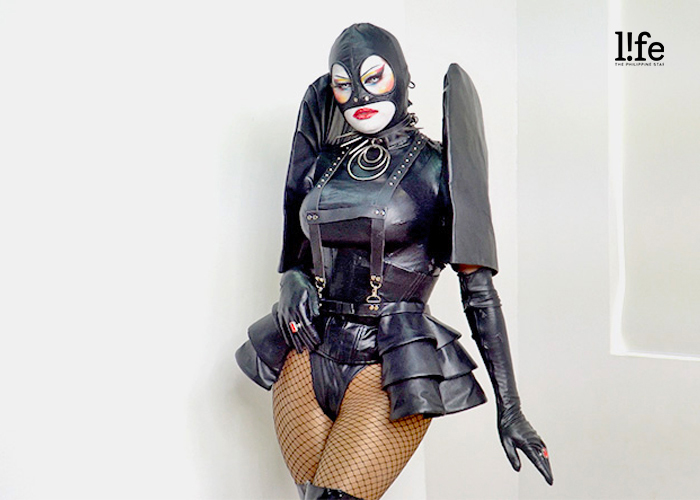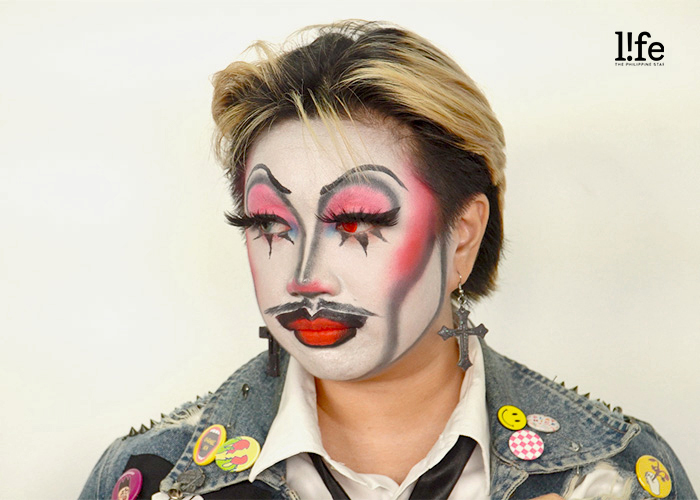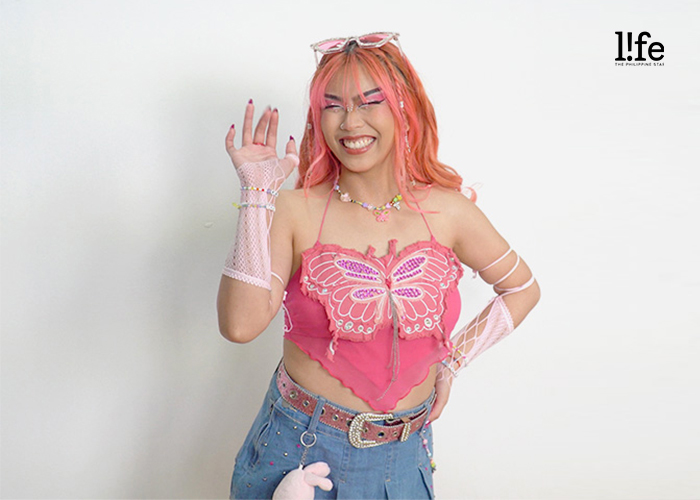Kings, hyper queens, alternative artists, and more: Pushing drag boundaries
Shows like Drag Race Philippines, Drag Den, and more are pushing the art of drag into the mainstream. Audiences are getting to know more about the glitz and glamour drag queens bring. But beyond the sparkle and comedic performances, other types of drag have also been living in the clubs.
As an art form, there is no one way to do drag. In addition to drag queens seen on TV, there are drag kings, hyper queens, drag monsters, genderless artists, and more.
"Drag is the art form of gender and expression," Worshipthegays, the "Mother" of Filipino alternative drag, told PhilSTAR L!fe.
"Noon, it is [primarily] used to impersonate women. Ngayon kasi, marami na tayong iba't ibang klase ng art form of drag," she said, adding that it's about becoming "anything and anyone," not just a woman or a man.
Worship started doing drag when she was a student in 2018 after photographing queer people. "Ayoko lang maging ['yung] photographer na observer doon sa mga subject ko so I became the art myself."

Meanwhile, drag king Inah Demons got their start after joining a local fashion competition called "Big Drag Energy" in 2019.
Their first-ever performance was at a grand stage: Metro Manila Pride. "It was a good but stressful experience pero mostly good kasi nga there is really something different about performing [live]."
Inah added that they felt joy performing and knowing that they were the first Filipino drag king some of the audience at the pride march had seen.

Hyper queen Savvy, who calls herself "your sapphic fantasy," was introduced to drag when she appeared in local drag competition Mudrakels. But she considers her real start in drag a few months ago.
"That's when I realized who Savvy is, who the character is, what I wanted to do," she said.
Her drag in one word is "lesbianism."
"The references, the numbers, the looks all of it is basically pulled from sapphic culture... It's not really something that's celebrated a lot in the media, like there's barely any sapphic content but now dumadami," Savvy told L!fe.

Outside the mainstream
ICYDK, a drag king is a person who dresses up in more masculine clothes, wigs, makeup, and more to perform as a man. But for Inah, they don't think about performing masculinity.
"When it comes to certain songs and numbers, mapapasiga ako kasi bagay sa song or concept na naiisip ko for a number but it really depends sa concept na naiisip ko, kung anong story yung gusto kong ipakita," they said. "For example, mas feminine yung song, pero gusto ko isubvert yung expectations ng mga tao, I perform in a more masculine manner and vice versa."
The local drag king added that the masculinity they show on stage tries to combat patriarchy and misogyny.
"My masculinity is very campy[.] It's not all the time 'macho,' 'siga,' 'dude, pare bro' na ganoon. Pero when I do that or ji-no-joke ko ganoon, it's always to subvert, it's always to poke fun at those types of masculinity na very siga," Inah said.

Like the drag king, Worship aims to subvert expectations that come with drag.
"'Yung Filipino alternative drag is iba siya doon sa nakikita nating mainstream drag kasi there's an intent na mag-subvert sa kung ano yung norm. Kumbaga 'yung intention mo to always do something different and to make something new," she told L!fe.
In human evolution, dahil sa nagkakaroon ng deviant changes dun sa genes natin, nag-e-evolve. And right now, drag is mainstream [and] nano-normalize siya. The alternative is actually there to become deviant. Deviance is a catalyst for the progressive elevation of the art of drag.
But alternative doesn't always mean going for a spookier or more gothic aesthetic, according to Worship. For her, alternative drag is going against the grain.
"In human evolution, dahil sa nagkakaroon ng deviant changes dun sa genes natin, nag-e-evolve. And right now, drag is mainstream [and] nano-normalize siya. The alternative is actually there to become deviant. Deviance is a catalyst for the progressive elevation of the art of drag."
At a Worship show, you can expect the unexpected—in her past performances, she has eaten dog food, washed clothes on stage, drank soap, and dressed like a fish. "Para 'pag nakita 'yun ng mga tao, 'Uy, naisip niya 'yun,' or parang 'pag nakita ng drag queens, 'Ay, pwede pala 'yun!'"
Meanwhile, the term "hyper queen" has gone through different iterations in the past. People who are assigned female at birth (AFAB) who do drag were called "bio queens" and later "AFAB queens."
"I prefer hyper queen because it's kind of like a hyperfeminized version of who I am out of drag," Savvy said. "It's not just a woman dressing up as a woman. It's celebrating femininity and putting an exclamation point times a hundred. That for me is hyperqueendom."
When a [drag] queen says something, kailangan mo makinig! So why not use that to make change that actually matters.
The challenges
Despite drag becoming more mainstream and visible, drag artists still face struggles, even within the community.
"People still have this notion na drag is just for gay men and then squeeze in konting trans women but not for AFABs. No. Not even drag kings get the recognition they deserve," Savvy said. "You can't deny that there's still misogyny."

"L is the first letter of LGBTQ+ but along with trans men, we’re (lesbians) the least visible and least represented group in the community," she added, hoping that there would be more lesbian representation in the media.
"[Kings] tend to be shoved aside kasi di kami yung ineexpect nila na drag eh," Inah shared. "Unfortunately, there are instances na people are set talaga na there is one way to do drag or may isang drag style lang talaga na everything else wala sila masyadong paki.
'Drag is political'
With drag artists given a platform, they have a responsibility to advance the advocacies of marginalized communities.
"The drag platform is used not only to entertain, it is also used to educate and to push forward change," Worship said. "[Like for] people to know the SOGIE bill, to have a same-sex union here in the Philippines, trans rights, and HIV [awareness]."
She continued, "People listen to us, watch us kasi takaw atensyon ang drag."

Savvy echoes this, saying a drag artist adds impact to a message.
"When a [drag] queen says something, kailangan mo makinig!" she said. "So why not use that to make [a] change that actually matters."
Future of Pinoy drag
Inah hopes that drag in the Philippines will recognize other forms of expression outside the ones we see on Drag Race.
"I hope na like in the future, there will be more recognition toward communities na 'di nila masyado na-re-recognize like alternative drag or trans drag artists, drag kings. I hope there will be more recognition and opportunities for them," they said.
Savvy added, "I hope drag in the future can be more inclusive and intersectional. There [are] so many types of drag and we're putting our focus on the glam and comedy and I feel like in the future we should shine a light on all types of drag and people kasi drag is for everyone—hindi dapat siya kinakahon.
Worship, who hopes to one day be a "National Artist for Drag," envisions that the art form will continue to contribute and make waves in the entertainment scene. "Look at Marina Summers. She did a great job, right? I think there will be more people like [her]."
She also thinks that as drag gets more mainstream, it will give the LGBTQ+ community a louder voice in the realm of politics.
"I think we'll get the SOGIE bill, same-sex union. As in, kakabogin natin 'yan," Worship said.
Produced by Ayie Licsi
Video by Anthony Abad
Assisted by Jasmine Baga



